“Thank you, but we’ve already hired someone.”
Nobody likes hearing those words. You’ve just wasted a trip and your time. And you thought your estimate was a winner.
Nobody enjoys losing a job, especially when it means you’ve wasted your valuable time and fuel. You drive to the job site, do the walkthrough, put thought into how to best get the job done, and write it all up for the potential customer. Losing the job after putting that much into it is a terrible feeling. In many locations and industries, you’re up against at least 3 other service pros competing for the same job. So how do you stand out? We work with thousands of service pros every week, and have learned that delivering a great estimate can be the difference between a job won and a job lost. Luckily there is a science to writing estimates that win more jobs.“There is a science to writing estimates that win more jobs.”
1. Deliver Your Estimates Fast
If you think it’s OK to send an estimate to the homeowner several hours later, you’re wrong. Homeowners typically want to see things in writing before making a decision. “Let’s shake on it” or a verbal agreement doesn’t cut it these days. If you take too much time to put an estimate together then it’s very likely a competitor will get something in front of the homeowner before you, drastically increasingly their likelihood of securing the job.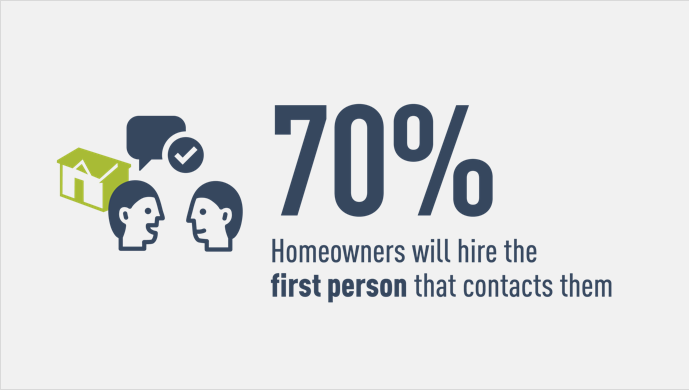
2. Make Your Estimates Sell For You
It amazes me how many service pros overlook the potential of their estimates as a sales tool. As a homeowner I care just as much about the credibility of the service professionals I hire as the quote they provide. In fact, the cost is often the last thing a homeowner considers when making a buying decision. First and foremost, they want to know that you and your team can do the job and do it well.
They think: “Can I trust this guy to do a good job? How long has he been around? What kind of reputation does he have? Am I getting ripped off?”
Your estimates need to sell your business by answering these types of questions. They need to tell the homeowner that you’re the best pro for the job and you can be trusted. This can easily be accomplished by adding what we call “trust elements”, which include badges from review sites like HomeAdvisor or Yelp.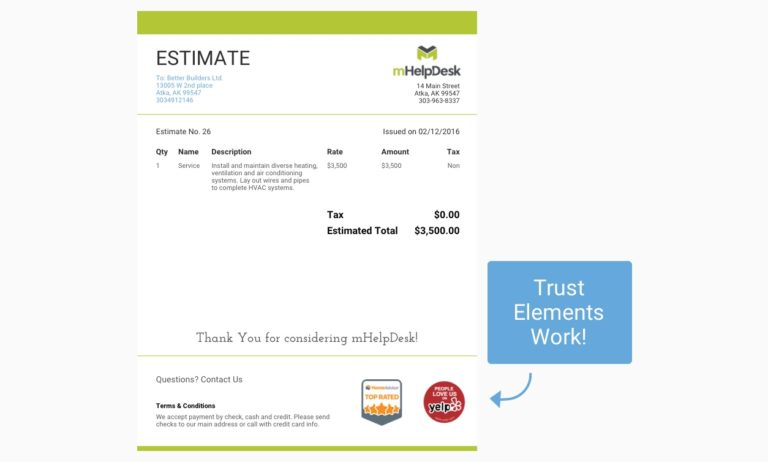
These badges let homeowners know that you encourage customers to share their experiences working with you, publicly and for future customers to see. It also legitimizes your business, as companies like HomeAdvisor require a vetting prior to adding you to their service provider network. Adding these trust elements to your estimates is easy. You can usually find your trust elements on popular review sites where you have a listing and your trade associations.
3. Price Your Estimates Competitively
Don’t confuse this with being the cheapest. Pricing competitively means that you’ve done your research and have priced your services according to market prices. Being the cheapest can actually harmful because if you come in too low homeowners will assume you’re cutting corners. On the other hand, if you come it too high the homeowner will have a lot of questions as to how you got to that price. When a homeowner is assessing the estimates they’ve gotten from you and your competitors, you want to be what we call “Goldilocks”: just right.
Pricing is both an art and a science. It can be tricky if you don’t know what other companies charge for a similar job, which is why many service pros end up pricing themselves out of winning jobs. There are tools that make researching market prices easy. My personal favorite is HomeAdvisor’s True Cost Guide, which also happens to be free.
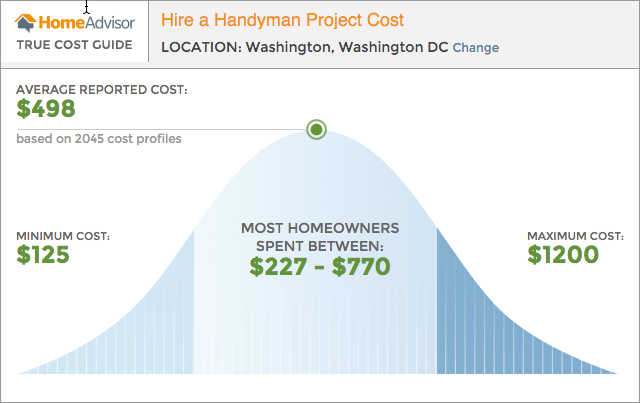
It allows you to enter the scope of work and a zip code, then it shows you the average price is for that area. Once you get a ballpark figure you can adjust your estimate’s price accordingly.
Use tools like this to get that “Goldilocks” estimate that will win the job.
4. Be Detailed And Break Down The Work
As a homeowner hiring a service pro, there is nothing worse than not knowing what exactly you’re paying for. When a homeowner is comparing estimates from different service pros, the one that is the most clear and concise has a better shot of making the customer feel comfortable. Homeowner peace of mind is key to winning.
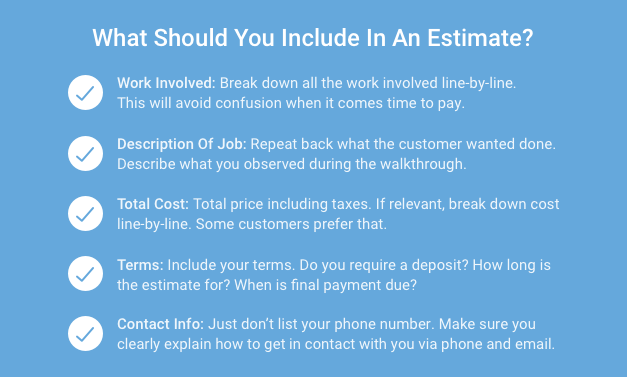
5. Make Your Estimates Professional
Being professional isn’t just about showing up on time and in a uniform anymore. Your presentation extends into how you do everything, including your documents like estimates. Handwritten estimates were acceptable a decade ago, but homeowners today expect more polish.
Below are two real estimates. Both estimates quote nearly the same cost for the job. Which one do you think leaves a better impression?
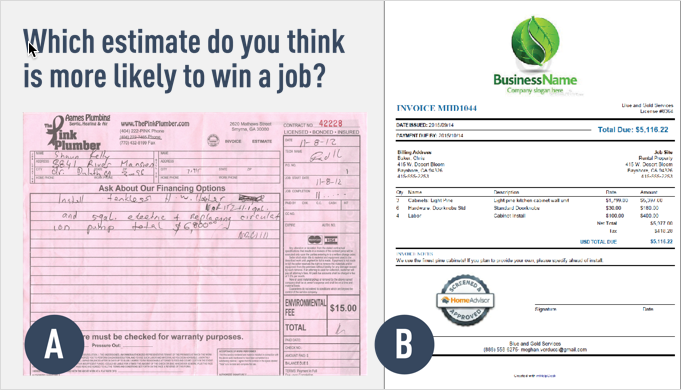
Estimates that win are easy to read, the work is clearly spelled out, and the entire document is error free. There are a handful of online tools available that make creating professional estimates easy. They also do the math for you, which reduces simple addition or subtraction mistakes.
The estimate is a key factor in turning more leads into jobs. By following these 5 simple tips you can create standout estimates to get the competitive edge.

